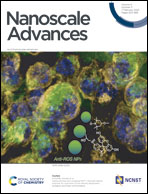A binder jet 3D printed MXene composite for strain sensing and energy storage application†
Abstract
Polymer composite materials have been proven to have numerous electrical related applications ranging from energy storage to sensing, and 3D printing is a promising technique to fabricate such materials with a high degree of freedom and low lead up time. Compared to the existing 3D printing technique for polymer materials, binder jet (BJ) printing offers unique advantages such as a fast production rate, room temperature printing of large volume objects, and the ability to print complex geometries without additional support materials. However, there is a serious lack of research in BJ printing of polymer materials. In this work we introduce a strategy to print poly(vinyl alcohol) composites with MXene-surfactant ink. By ejecting highly conductive MXene particles onto a PVOH matrix, the resulting sample achieved conductive behaviour in the order of mS m−1 with demonstrated potential for strain sensing and energy storage. This work demonstrates that BJ printing has the potential to directly fabricate polymer composite materials with different end applications.



 Please wait while we load your content...
Please wait while we load your content...